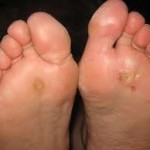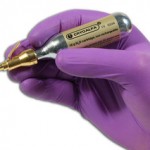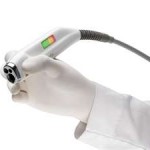Plantar warts are caused by HPV or the human papiloma virus. These occur as growths of skin on the soles of people’s feet. Even though HPV has been associated with some cancers these skin growths are in no way cancerous.
 Often what has happened is that a small cut or a broken blister on your foot sole is where the virus would have entered.
Often what has happened is that a small cut or a broken blister on your foot sole is where the virus would have entered.
Sometimes though, plantar warts can be painful or they can spread and cause more warts. Notice carefully if this happens, because smaller warts are not as difficult to treat as many larger ones.
Home remedies have been shown to be effective on plantar warts, but sometimes they can stubbornly resist treatment. Therefore, most treatments require patience, persistence and multiple interventions.
Salicylic Acid has been shown to be effective, either in liquid or in a patch form. Layers of the skin will come off a little bit at a time. As with other types of warts that are treated with salicylic acid, it is best to soak the area in warm water for 20 minutes and then apply the liquid or the patch. The sticky patches can stay on for 2 days, but the liquid needs to be applied twice daily. As the treatment takes its course, a pumice stone can be used to remove the dead layers of skin.
This is not an overnight cure, this treatment can take several weeks and even months.
The other option for home over the counter treatment is the various “freezing” products on the market. Scholls or Compound W are these types of products, but they are not the actual cryotherapy that you would get at a doctors office and they obviously don’t reach the same cold temperatures that doctors will use. Many people feel pain when these treatments are applied.
When treating plantar warts, a doctor visit is not always required. But they are tough to get rid of and often require multiple treatments. If they do not work though or if sufferers also suffer from some immune diseases or diabetes, then a doctor’s intervention is required. They can use other treatments and they can carefully monitor any treatment you that they recommend over the counter.
 When doctors use cryotherapy treatment they use liquid nitrogen. This is a highly strong chemical and will make a blister on and around your wart. It takes about a week or more for the dead skin to fall off. Sometimes the blisters that result from cryotherapy are painful, but they will resolve on their own time.
When doctors use cryotherapy treatment they use liquid nitrogen. This is a highly strong chemical and will make a blister on and around your wart. It takes about a week or more for the dead skin to fall off. Sometimes the blisters that result from cryotherapy are painful, but they will resolve on their own time.
There is another treatment that is used less frequently and it involves an extract from something known as a blister beetle. Very often this substance from the blister beetle is mixed with salicylic acid and then spread on the plantar wart and then a band-aid or bandage is applied. This does not hurt but it can hurt later when the doctor removes the dead tissue that results by cutting it off.
 Other more extreme treatments include minor surgery, laser treatments or prescription ointments. Surgical intervention can be painful and can result in scarring. Plantar warts are difficult to treat but not impossible, patience, persistence and consistency is required.
Other more extreme treatments include minor surgery, laser treatments or prescription ointments. Surgical intervention can be painful and can result in scarring. Plantar warts are difficult to treat but not impossible, patience, persistence and consistency is required.